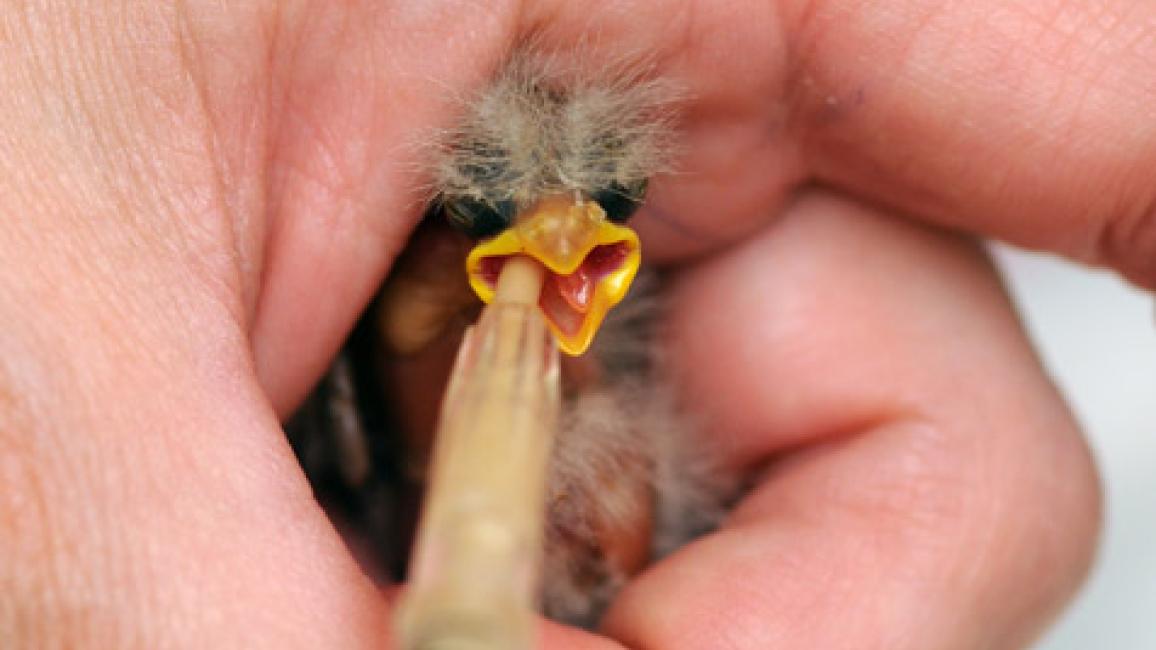Mystery hatchling of unknown species

She was about an inch long. Or perhaps "she" is a "he." There’s no way to tell yet. It’s difficult to discern her species, too, but she is definitely adorable, with white fluff that will eventually become feathers. She opens her mouth, which is bright yellow inside, for food, and that is the extent of her activity.
Hatchling's arrival at the Sanctuary
She arrived late one afternoon at Wild Friends, Best Friends’ licensed wildlife rehabilitation center. A kind volunteer, who also transports community cats from Hurricane, Utah, to the Best Friends clinic to be spayed and neutered, brought her.
It’s unknown exactly what may have happened to her in her young life. Perhaps she fell out of her nest that was so high up and out of reach that she couldn’t be returned to it.
TLC for baby bird
Every spring and summer, Wild Friends receives dozens of orphaned songbirds, not to mention all the hundreds of other kinds of birds, from birds of prey, to water birds, to hummingbirds — and wild mammals and reptiles, too. Every species has particular requirements, and each individual bird has different needs.
Todd Moore, Wild Friends staff person, fed the mystery hatchling one of the special baby songbird diets right away. There are several different diets because not every hatchling has the same dietary requirements. Her yellow mouth is a clue — this baby will most likely grow up to be an insectivore. Feeding exactly the right diet at exactly the right interval is essential if a hatchling is to survive and thrive.
The little baby was also put on oxygen and placed in a nest made to fit her. She is kept warm, just as she would be if she were surrounded by her siblings and mother.
She is doing well, and gaining weight every day.
Becoming a real nestling
With a little bit more time, when this mystery hatchling has become a real nestling and has grown some feathers, it will be clear which species she is. Soon she’ll be able to flap her wings and learn to perch.
With the expert attention of the licensed wildlife rehabilitators at Best Friends, she won’t be allowed to become tame, but will be placed with other orphaned songbirds, so that she will retain her wild identity and won’t get too used to humans. In a few weeks, she’ll be carefully released into a good habitat for her species, and she’ll take to the sky.
How to help a baby bird
If you should come across any little bird that seems to have fallen from his nest, don’t try to care for the bird yourself (it’s really complicated). Instead, immediately call a licensed wildlife rehabilitator near you (or call Best Friends for the name of a local rehabilitator at 435-644-2001, ext. 4460), who will give you guidance as to whether the baby bird can be put back in his nest — which is often, but not always, best — or should be taken to the rehabilitator.
Find out more about wildlife rehabilitation at Best Friends Animal Sanctuary.